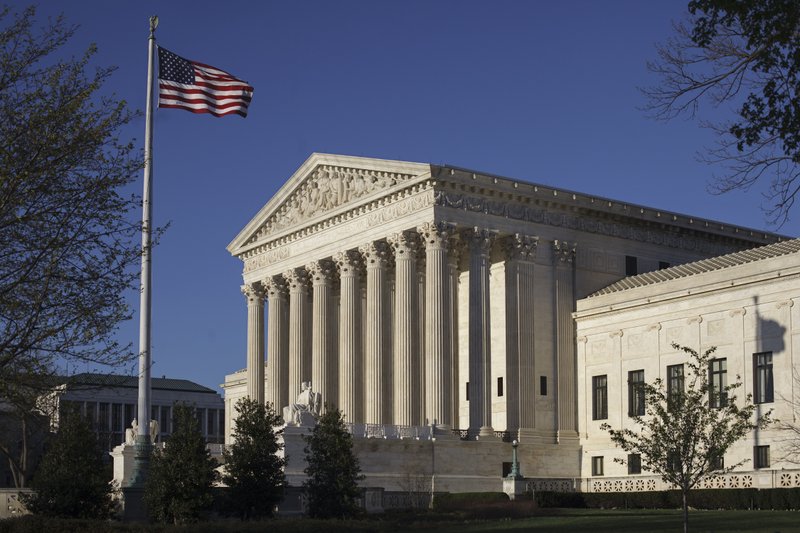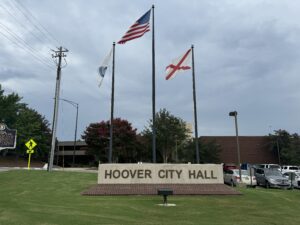Kay Ivey authorizes Alabama National Guard to send support to Puerto Rico

An RC-26 aircraft and a team of five Alabama National Guard crew members have been authorized to deploy to Puerto Rico in response to the recent hurricane impact to the island. Governor Kay Ivey authorized Major General Sheryl Gordon, Adjutant General of the Alabama National Guard, to send the RC-26 — highly capable aircraft in relation to airborne reconnaissance missions. The aircraft and crew will provide aerial imagery of hurricane impacted areas — based on the unique capabilities the aircraft will provide in supporting the efforts of Puerto Rican emergency managers and the National Guard. “Alabamians are a kind and caring people – we are committed to helping those in need,” said Ivey. “We are proud to offer the Alabama National Guard to assist with recovery efforts in Puerto Rico, and we continue to keep the people of Puerto Rico in our thoughts and prayers.” More than 3.4 million U.S. citizens in Puerto Rico still lack adequate food and water six days after Maria ravaged the island as a Category 4 hurricane. Officials say electrical power may not be fully restored for more than a month. Alabama National Guard equipment and personnel remain postured to ensure additional resources are readily available to support other recovery efforts, if needed.
In Alabama, a Donald Trump miscalculation in Senate primary

A firebrand Alabama jurist wrested a U.S. Senate nomination from an appointed incumbent backed by millions of dollars from national Republicans, adding a new chapter Tuesday to an era of outsider politics that ushered Donald Trump into the White House yet leaves his presidency and his party in disarray. Roy Moore’s 9-point victory over Sen. Luther Strange, backed by the White House and Republican leaders on Capitol Hill, ranks as a miscalculation and temporary embarrassment for the president; it’s a more consequential rebuke for Senate Majority Leader Mitch McConnell, who Moore said should step aside as GOP floor chief. The Kentucky Republican already is struggling to capitalize on his narrow 52-48 majority. He failed this week to deliver a long-promised health care overhaul, with equally perilous fights looming on taxes, the budget, immigration and the nation’s credit limit. Now, McConnell may also face a 2018 midterm election cycle complicated by GOP primary challengers who, like Moore, make the Senate leader an albatross for establishment candidates, including incumbents Dean Heller of Nevada and Jeff Flake of Arizona. Moore, the famed “Ten Commandments judge” twice removed from elected judicial office for defying federal courts, declared his nomination a message to Washington leaders “that their wall has been cracked and will now fall,” though he excepted the president from his ire. “Together we can make America great,” he said, echoing Trump’s campaign slogan. In Mississippi, state lawmaker Chris McDaniel, who nearly defeated Sen. Thad Cochran in 2014, called Moore’s win an “incredibly inspiring” blueprint that leaves him on the cusp of challenging Sen. Roger Wicker in 2018. “We know Mitch McConnell was rejected tonight — and Roger Wicker is just another part of Mitch McConnell’s leadership apparatus,” McDaniel told The Associated Press, saying he expects conservative challengers to emerge in other states, as well. Trump and McConnell quickly closed ranks behind Moore after Strange conceded, underscoring their desire to keep the seat in Republican hands. Trump tweeted congratulations to Moore after the win. “Luther Strange started way back & ran a good race. Roy, WIN in Dec!” he said Three tweets supporting Strange on Monday and Tuesday disappeared from Trump’s Twitter account. The White House didn’t immediately respond with an explanation. On Wednesday morning Trump sent a tweet praising Moore. “Spoke to Roy Moore of Alabama last night for the first time. Sounds like a really great guy who ran a fantastic race,” said Trump’s tweet. The Senate Leadership Fund, a McConnell-aligned political action committee, also pledged to support Moore after spending $9 million on Strange’s behalf. A West Point graduate and Vietnam veteran, Moore now is the favorite over Democrat Doug Jones in a Dec. 12 special election, though Republicans quietly worry the sometimes controversial Moore could yield an uncomfortably close race to fill the seat previously held by Attorney General Jeff Sessions. Trump, meanwhile, must reconcile being the president who promised to “drain the swamp” yet endorsed and campaigned alongside Strange, 64, a lobbyist-turned-politician, in lieu of Moore, a 70-year-old figure steeped in anti-establishment fervor. Adding intrigue was the fact that Strange got his Senate post by being promoted from his job as Alabama attorney general by a now-convicted former governor whom Strange’s office had been investigating for corruption. Trump’s choice left him opposite from his campaign architect and departed White House adviser Steve Bannon, who campaigned for Moore and introduced the nominee to his supporters Tuesday night as revelers watched returns showing Moore victorious in 63 of Alabama’s 67 counties. Bannon cast Moore’s romp as a win for Trump, regardless of the president’s Strange endorsement. “Who is sovereign, the people or the money? Alabama answered today,” Bannon said. Mississippi’s McDaniel said conservatives never blamed Trump for taking sides. “We supported Donald Trump because he was an agent of change, and he’s still an agent of change,” McDaniel said. “In this instance, he must have been given bad advice to retain this particular swamp creature.” And it’s worth noting that Trump turned his trip to Alabama last week into a national spectacle having nothing to do with Strange or Moore, as the president blasted professional athletes who protest during the national anthem. The fallout cemented Trump’s bond with his core supporters and raised questions about how interested Trump really was in the Alabama race. Elsewhere in Republican ranks, there are warnings not to make the Alabama results more than one state’s choice. Republican pollster Whit Ayres, who has worked for Senate campaigns across the country, said Trump learns the same lesson his predecessor, Barack Obama, learned watching Democrats lose control of Congress and then seeing Trump defeat his chosen successor, Hillary Clinton. “You can’t just transfer the popularity of your brand to another candidate,” Ayres said. As for Strange, Ayres noted the freshman senator was facing voters for the first time since being appointed by a governor who eventually resigned in disgrace. “No other Republican Senate incumbent will carry that baggage,” Ayres said. In defeat, Strange did not directly confront those variables, telling a subdued crowd in suburban Birmingham he was proud of his team’s effort and grateful both to Trump and his Senate colleagues, but befuddled by the campaign he’d just concluded. “We’re dealing with a political environment that I’ve never had any experience with,” Strange said. “The political seas and winds in this country right now … are very hard to navigate, very hard to understand.” Republished with permission from the Associated Press.
Big stakes in high court fight over partisan political maps

Democrats and Republicans are poised for a Supreme Court fight about political line-drawing with the potential to alter the balance of power across a country starkly divided between the two parties. The big question at the heart of next week’s high court clash is whether there can be too much politics in the inherently political task of drawing electoral districts. The Supreme Court has never struck down a districting plan because it was too political. The test case comes from Wisconsin, where Democratic voters sued after Republicans drew political maps in 2011 that entrenched their hold on power in a state that is essentially evenly divided between Democrats and Republicans. “It could portend massive changes in our electoral system,” Washington lawyer Christopher Landau said, if the court for the first time imposes limits on extreme partisan gerrymandering, or redistricting. Courts have struck down racially discriminatory maps for decades. Wisconsin Republicans controlled the redistricting process that followed the once-every-decade census because they held the governor’s office and both houses of the legislature. They worked in secret to fashion precise, computer-generated maps and won approval on a party-line vote. The results in three elections held under those maps have almost perfectly aligned with their predictions, even in 2012, when Democratic President Barack Obama carried the state. Democratic legislative candidates won a majority of the vote statewide then, but wound up as the minority party in the State Assembly. “I don’t want anybody, any party, to be in full control,” said Emily Bunting, an organic farmer from western Wisconsin who joined the lawsuit. “I want fair elections, is what I want. I don’t think a Democratic gerrymander is any better than a Republican one. I think that issue needs to be addressed.” A handful of Republican elected officials, including Sen. John McCain of Arizona and Gov. John Kasich of Ohio, have joined in the call for the court to rein in extreme partisan gerrymandering. “From our vantage point, we see wasted votes and silenced voices. We see hidden power. And we see a correctable problem,” McCain and Democratic Sen. Sheldon Whitehouse said in a Supreme Court brief. But the parties are otherwise sharply divided, with Republicans arguing that courts should not be involved in the competition between the parties to wring gains out of redrawn electoral maps. Texas Solicitor General Scott Keller told the justices that “political competition is a necessary component of legislative-controlled redistricting.” A three-judge court in Wisconsin, though, agreed with the Democratic voters that there was too much politics in the Wisconsin maps. The redistricting packed Democratic voters into some districts and scattered them across others, with the aim of limiting how many seats Democratic candidates could carry, even in a good year for Democrats. The case will be argued before the nine justices on Tuesday, although the arguments will be tailored to just one, Anthony Kennedy. People on both sides of the case widely anticipate that the four liberal justices will side with the voters who sued. Conversely, the four conservatives probably will think these disputes should be resolved by the political branches, not the courts. That leaves Kennedy, who has left the door open to court challenges to extreme partisan redistricting, but has never found a satisfactory way to measure it. The legal team representing the Democratic voters is saying, “’Justice Kennedy, we have found the shiny holy grail you said was lacking,’” Landau said. He was describing the test that the three-judge court used to establish the districting plan’s discriminatory intent, its likely durability over its 10-year life and the inability to explain it other than for partisan advantage. Gerald Hebert, who directs voting rights and redistricting litigation at the Campaign Legal Center, said the case his team is making is not a partisan one, even though the center represents Democrats in the case. “If we’re going to get Justice Kennedy’s attention, we have to make sure he really understands this is not just a Democratic problem. It happens to be right now that Republicans control way more legislatures. But … in states where Democrats control the entire redistricting process, the districts also are gerrymandered,” Hebert said. Other lawsuits challenging maps are ongoing in Maryland, where Democrats hold all but one of the state’s eight seats in the House of Representatives, and North Carolina, another narrowly divided state in which Republicans nonetheless hold commanding majorities in the legislature and the state’s congressional delegation. Defending the maps in the Supreme Court case, Wisconsin Attorney General Brad Schimel, a Republican, said courts would be overwhelmed with partisan redistricting lawsuits if the high court rules against the state. “The Supreme Court has never permitted a map to be struck down when you followed traditional redistricting criteria and these maps do,” Schimel said. Thirty-one years ago, in an earlier case about partisan redistricting, it was the Republican National Committee that pointed to the dangers when one party held too much sway over map-making. “The new technology available to redistricters provides those in the majority with a very tempting means of discriminating against any minority, political or otherwise,” the RNC wrote, concluding that “the vitality of America’s political parties, and the integrity of our representational government, are at stake.” Republished with permission from the Associated Press.


